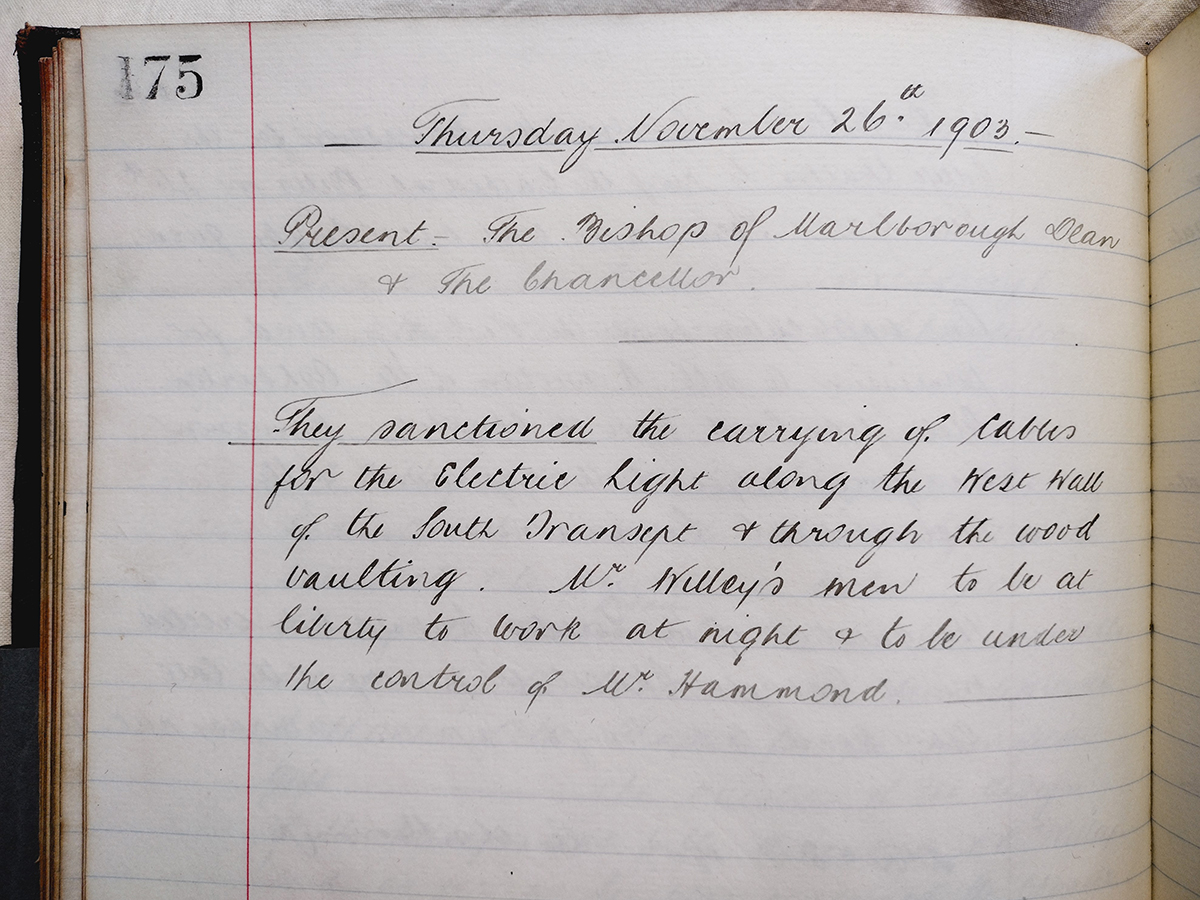 By Ellie Jones, Cathedral Archivist
By Ellie Jones, Cathedral Archivist
We are now past the Winter Solstice, and the days are slowly getting longer – even if some days it probably doesn’t feel like it. Today instant illumination is available to most of us through the flick of a light switch, or the use of a torch or flashlight function on our mobile phones, and there are often street lamps to light our way.
In the 18th century, eleven oil lamps illuminated Cathedral Close, and the Dean & Chapter employed a lamp watcher and a lamplighter to light, trim, snuff and maintain them. Then, gas lighting arrived. An Act of Parliament for “Lighting with Gas the City and County of Exeter” came into effect in April 1816, but it wasn’t until November 1818 that the Dean & Chapter gave consent for the Close to be lit by gas. Although the Act only required the provision of ten lamps, the Close had twenty; six were paid for by the Chapter, and the Exeter Gas Company paid for the rest. The new gas lamps were more efficient, but unfortunately for James Arberry – the Chapter’s lamplighter at the time – this meant a reduction in his wages “in consequence of the introduction of gas lighting, removing the need for him to care for the oil lamps”.
Electricity arrived in Exeter in 1889, but it wasn’t until 1896 that the first discussions of the use of electricity are documented at the Cathedral. Initially this was to power the organ but, in June 1900, it was agreed that electric lights should replace candles in the organ loft. The big change came in November 1903 when, after extensive discussion, Chapter accepted Mr Willey’s proposal for the installation of electric lighting throughout the Cathedral interior. Willey & Co. Ltd, engineers, was an innovative company and Exeter’s largest employer at the time, headed by Henry Alfred Willey. Willey was a great advocate for electricity, and had previously won awards for his work with electricity, light, sound and heat. Mr Harbottle designed new brass pendant lights for the quire, and iron ones elsewhere, and Mr Hammond directed the installation. The new system was dedicated at a special service on 24 April 1904, where 500 seats were reserved for Willey’s employees.
Six years later the lamps in the Cathedral Close were also electrified, starting at Michaelmas 1910. The Cathedral’s electrical era was, by then, well established – except in the Cathedral Library. In August 1913 the Dean & Chapter still deemed electric lighting “not advisable” for the Library, and artificial light there was prohibited. Just two months later, however, they did allow Revd Langhorne (the Cathedral’s sub-librarian and, later, headmaster of Exeter Cathedral School) to be supplied with “two portable electric hand lamps with dry batteries” for use in the Library. We are glad to say that electric lighting is now considered perfectly advisable for the Library and Archives, so work can continue throughout the dark winter months without undue eye strain.